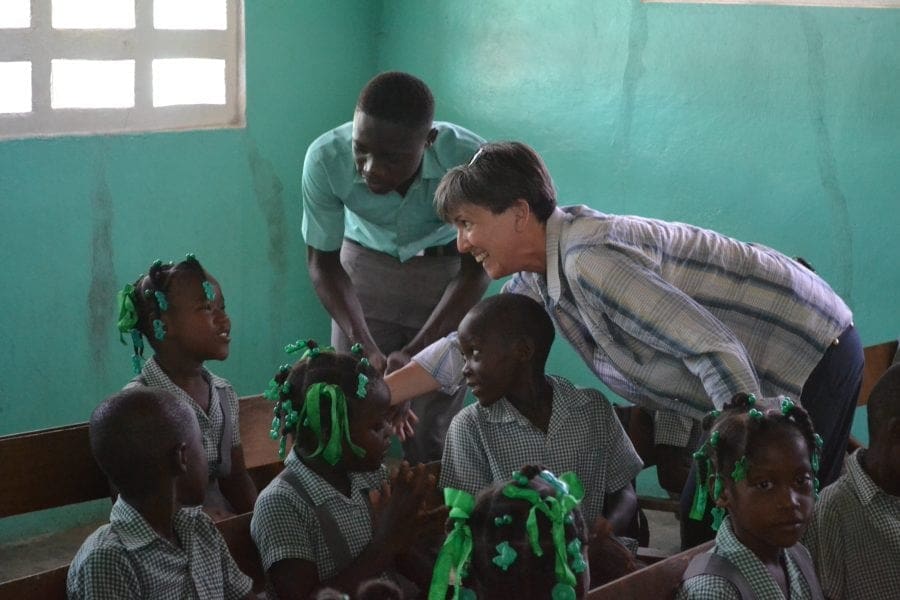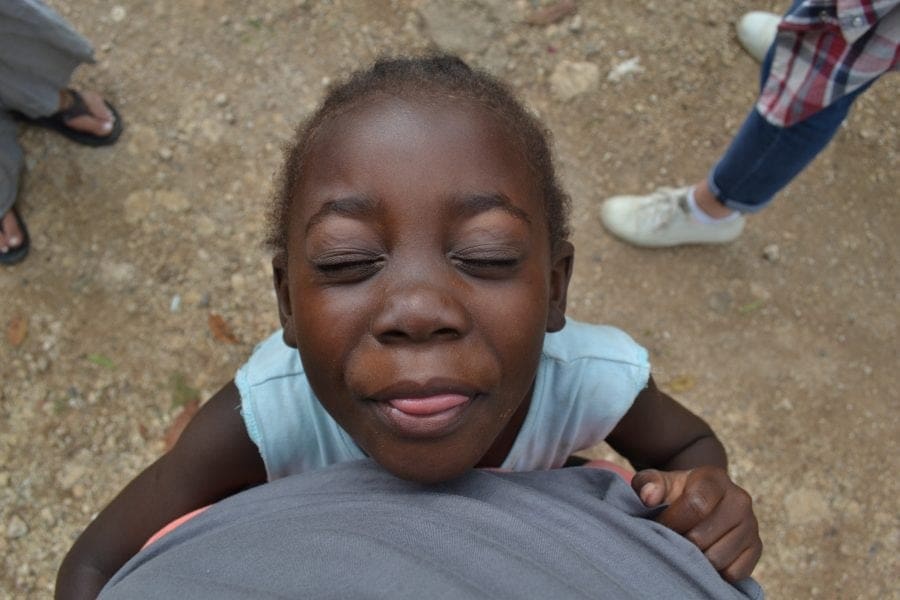Our journey to bringing TCI/TPRS to Haiti
What if you walked into school tomorrow to find that everything had drastically changed? Your whiteboard and SmartBoard have been replaced by a dusty, worn out chalkboard. You only one piece of chalk and there is no eraser to be found. Your projector is gone, and in fact, you have no outlets, light bulbs or electricity. With no air conditioning, the temperature inside your room is well above 90 degrees and you certainly feel the effects of 60% humidity in the air. Unfortunately, you cannot open the windows for some fresh air because the glare would make the barely legible chalkboard impossible to read. You think to yourself, “How on earth am I going teach my class without the Internet, computers, speakers, document cameras, photocopy machines, books, colored pencils, extra paper or markers?”
After an oftentimes very long walk to school and a very formal flag ceremony, 50 plus students noisily pour into your room and cram themselves into the narrow, heavy benches with backpacks on their laps for a two hour class. Some students who are lucky enough to have them, pull a slim notebook and one pen out of their tattered backpacks.
If you’re lucky enough to have a divider between yours and the classroom next to you (this would be a luxury), there might be a slight opening near the ceiling to allow for airflow. Unfortunately, the 50 plus students next door who don’t happen to have a teacher that day are all talking and laughing quite loudly and air isn’t the only thing flowing between rooms.
How would you face your new reality? Ready or not, it’s time to begin.
As the morning goes on and you find yourself continuously wiping the sweat off your face, the students get more and more restless because many have not eaten since the day before when they were served the portion of rice at school. The heat makes everyone lethargic, including you. Sound like impossible teaching conditions? Welcome to the day-to-day reality for most teachers in Haiti.
By Donna Tatum-Johns and Lisa Reyes







